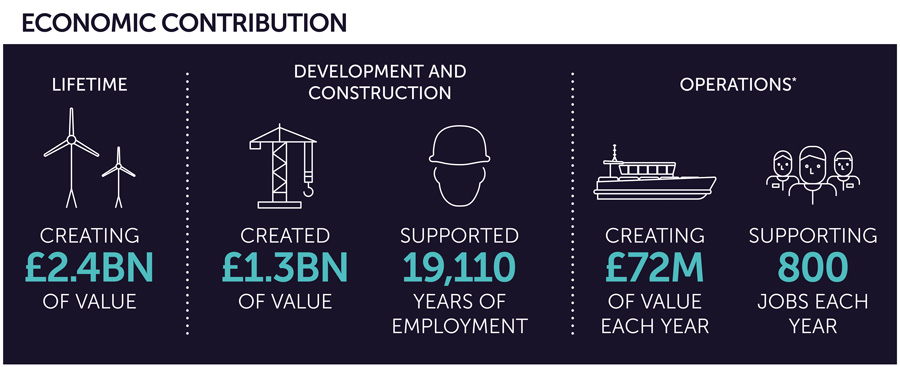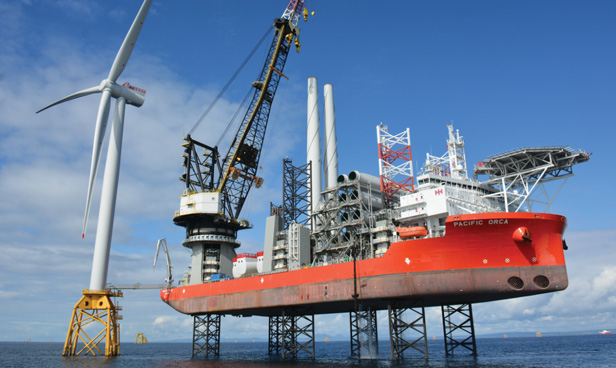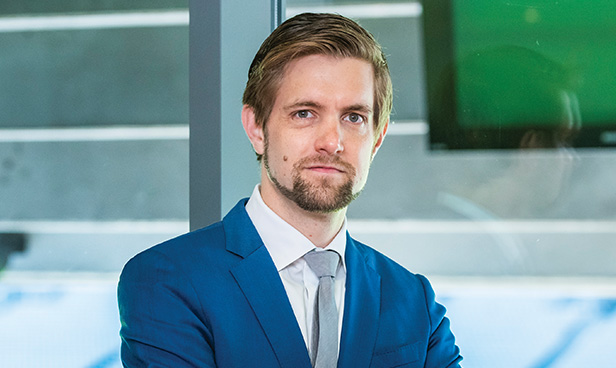
Hydrogen power will help revolutionise the world’s automotive and transport sectors
25th November 2019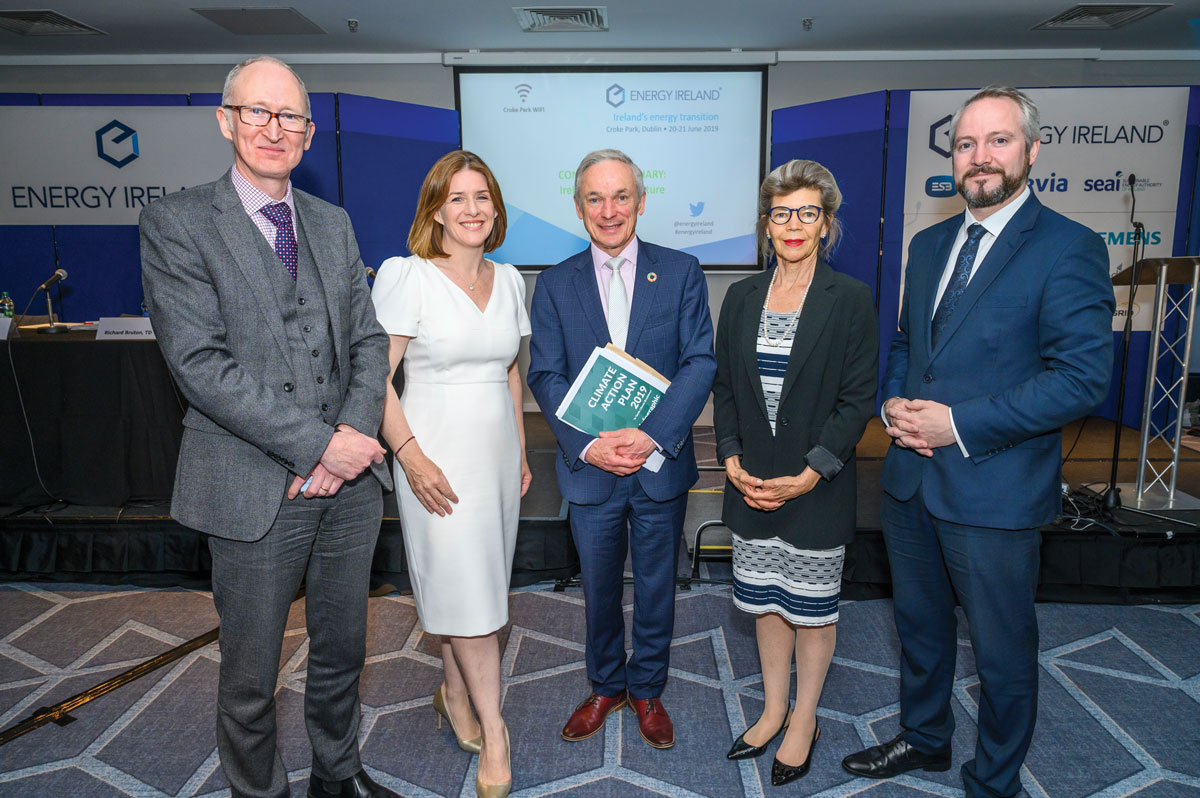
Energy Ireland 2019
25th November 2019Building for the future
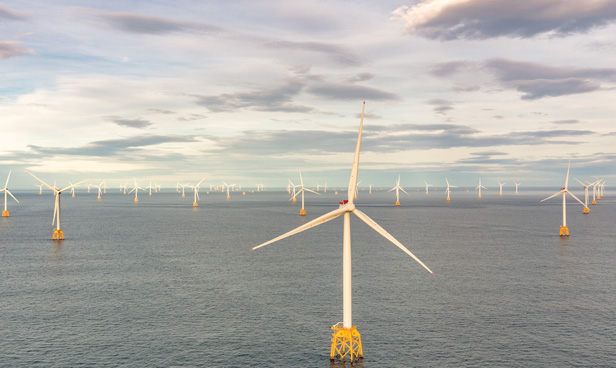
As Ireland turns its sights to the opportunities of offshore wind energy, new projects in the UK provide a blueprint to maximise the socio-economic impact from low carbon electricity generation, writes Barry Kilcline, Director of Offshore Development for Ireland at SSE Renewables.
The successful commissioning of Beatrice Offshore Wind Farm in Scotland’s Moray Firth marks the end of a 10-year journey. In that time thousands of people have, directly and indirectly, contributed to the development and construction of this world-class renewable generation site, so that today Beatrice is now Scotland’s largest offshore wind farm.
Situated 13 kilometres off Scotland’s Caithness coast, Beatrice is the world’s fourth largest offshore wind farm comprising 84 7MW Siemens Gamesa turbines capable of powering up to 450,000 homes each year.
The project is a joint venture partnership between SSE Renewables (40 per cent), Copenhagen Infrastructure Partners (35 per cent) and Red Rock Power Limited (25 per cent) with development, construction and now operation led by SSE Renewables on behalf of the partnership. Final investment decision on the £2.6 billion project was made in May 2016 and the project was completed on time and under budget by around £100 million in June 2019.
Beatrice breaks new ground in the offshore wind industry, nationally and globally. It is the largest wind farm in the world built using jacket foundations, fixed in the deepest water of any offshore site. And it is pioneering in its use of new and inventive development and construction techniques and strategies.
While development work for today’s Beatrice commenced a decade ago, its genesis goes back to 2004 when SSE and former Canadian oil company Talisman Energy announced plans for a world-leading project at the Beatrice oil field to test technologies for deep water wind farms distant from the shore.
The stated goal of the test was to see if large scale offshore wind technology would be a practical source of renewable energy. This was at the same time that Airtricity and GE Energy had successfully completed the co-development of Arklow Bank Wind Park Phase 1. That development of seven turbines in the Irish Sea was ground-breaking in that it was both the world’s largest offshore wind farm and the world’s largest turbines at the time, but developers were looking to go further by testing the capability of offshore technology in deeper, and more challenging waters. It’s safe to say that when you look at the scale of Beatrice Offshore Wind Farm now, that test has well and truly been passed with flying colours.
The vision for Beatrice has been realised by the partners who invested in Beatrice, the contractors who helped to develop and build it, and the wide range of stakeholders who encouraged SSE Renewables and its project partners to make sure that Beatrice was not just a clean energy project, but a clean energy project that is sustainable in every sense.
And in developing a project that achieves new level of sustainability in its delivery, Beatrice is a project delivery blueprint for Ireland’s emerging offshore wind energy industry.
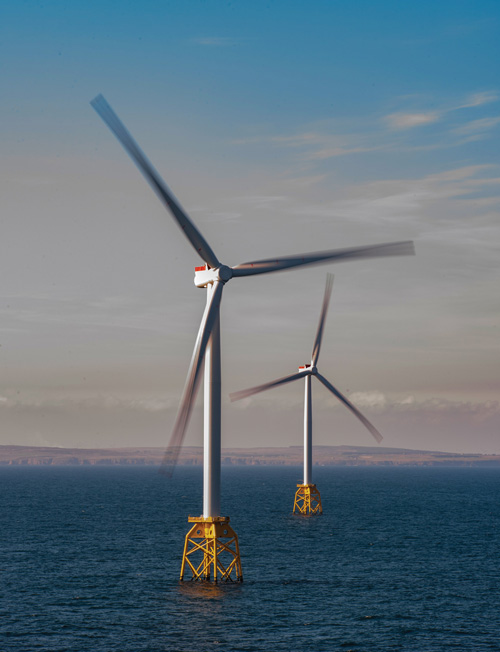
Beatrice offshore wind farm is Scotland’s largest wind farm and is capable of providing enough wind powered electricity for up to 450,000 homes. With a capital expenditure of around £2.5 billion, Beatrice was also one of the largest ever private investments in Scottish infrastructure.
Renewable energy companies have a responsibility to demonstrate that they will deliver offshore wind farms in a way that is environmentally and socially responsible and yields sustainable economic benefits. Designers, engineers, fabricators, local service providers and many more were involved in the early stages of developing this mammoth project to deliver Beatrice on time and under budget and problem solve challenges like marine mammal mitigation strategies and building in deep water.
Through the development phase, engagement with stakeholders and effective working partnerships to achieve mutually-positive outcomes were key. Between 2009 and 2016, detailed plans for the wind farm were prepared, based on the need for safe operations, respect for stakeholders’ perspectives, including those of local communities, care for the local environment and the maximum amount of clean energy.
SSE Renewables undertook independent analysis to demonstrate the transformative socio-economic benefits that Beatrice delivers to the UK, Scotland and to the regions, not just during construction but for decades to come. The report, compiled by BiGGAR Economics, documents how Beatrice will deliver a multi-billion-pound economic boost to the UK economy over its full lifetime. From initial development to the end of its operational life, Beatrice is expected to generate £2.4 billion of gross value added for the UK economy, just over £1 billion of which will be in Scotland.
Alongside economic impact, Beatrice is contributing a social legacy. It is helping regenerate the coastal economies of Wick and Caithness, is sustaining the creation of long-term skilled jobs, and is providing progressive and significant funding support to local communities. Most importantly, as Scotland’s single largest source of renewable energy, Beatrice is making a major contribution towards offsetting harmful carbon emissions, combating climate change and meeting the UK’s net zero by 2050 ambitions.
Beatrice also provides new learnings for SSE Renewables which will inform how future offshore wind farms are developed and built, including its pipeline of new offshore projects in Irish waters. SSE Renewables is developing Phase 2 of Arklow Bank Wind Park off County Wicklow which can generate up to 800MW and is also in the early stages of work on two new projects, the 800MW Braymore Point off the north-east and 800MW Celtic Sea array off the south-east.
As the leading developer in Ireland and the UK involved in every phase of an offshore wind project, from early development through construction and to long-term operations, we will use our unique opportunity to apply the learnings from Beatrice so we are continually building for the future, not just delivering new low carbon electricity generation but that we are doing so in a way that sustains national and regional economies across Ireland and the UK.
This means SSE Renewables will collaborate with partners with complementary skills and experience to overcome the inevitable challenges that come with these enormous endeavours; listen to the voices of host communities, being adaptable in the company’s approach and recognising each project and community is different; and pursue ways to make its large-scale infrastructure projects contribute a long-term social legacy.
The challenge of reaching net zero emissions for Ireland and the UK in the next 30 years is upon us, and we’re ready to build on our experience to deliver the offshore wind we’ll need to get there. In Ireland in particular, we have a role to support the Irish government in achieving its ambition, as set out in the Climate Action Plan, to deliver at least 3.5GW of offshore wind by 2030.
Offshore wind must play a central role in delivering Ireland’s 2030 renewables targets and power the low-carbon revolution Ireland requires. There are already a number of projects at various stages of development in Irish waters, and it’s crucial that these projects are now prioritised to give Ireland the best possible chance of achieving its binding EU targets and avoiding significant fines for failing to do so.
As at Beatrice, the development of a thriving offshore wind energy industry in Ireland will ensure multi-billion-euro investments in low-carbon generation, the creation of skilled regional jobs and supply-chain development, and the regeneration of local ports around the island.
It’s 15 years since Beatrice was conceived; it’s just 10 years until Ireland needs to have delivered a minimum of 3.5GW of offshore wind to meet our Climate Action ambitions; and just 30 years until both Ireland and the UK must end their contribution to global warming by achieving net zero emissions. So, let’s be inspired by what has been achieved at Beatrice and elsewhere in the renewables sector over the last 15 years to do everything we can to complete the transformation of our energy system through maximum deployment of offshore wind in the years ahead so we are meeting the most important challenge of our generation — combatting climate change.
A long-term source of economic value
The development and construction of Beatrice generated a significant level of economic activity in Scotland and elsewhere in the UK, and its operation will continue to do so over the next 25 years.
SSE Renewables and its project partners, Copenhagen Infrastructure Partners and Red Rock Power Limited, commissioned BiGGAR Economics to calculate the economic impact of Beatrice. Investment in Beatrice drives economic activity through the value it adds to the economy (referred to as Gross Value Added (GVA)) and the years of employment it supports. To fully capture the impacts of this spending, the BiGGAR Economics analysis includes activity further down the supply chain (indirect impacts) and activity that results from the spending of salaries (induced impacts), as well as direct impacts.
Over the full lifetime of the project, from initial development to the end of its operational life, Beatrice is expected to generate £2.4 billion of value for the UK economy (based on net present value), of which £1 billion GVA is expected to be in Scotland.
During the development and construction phases, Beatrice contributed £1.3 billion to the UK economy. Across the UK, the industry most impacted was the offshore support industry, which included companies that have previously worked in the oil and gas sector providing support activities for oil and natural gas extraction.
The GVA from Beatrice is expected to be even greater during the operation and maintenance phase, with a higher level of overall investment as well as a greater proportion of spend within Scotland and the UK as a whole. Over the 25-year operational life of Beatrice, it is expected that £72 million of value will be added to the UK economy on average every year, of which £34 million will be in Scotland.
Beatrice supported 19,110 years of employment in the UK during the development and construction phases, of which 7,180 were in Scotland. This included workers directly employed on site, those employed because of Beatrice’s supply chain contracts, as well as the employment supported as a result of these workers spending their salaries. As an indication of scale of this employment impact, the fishing and aquaculture sectors in Scotland directly employed 6,000 people in Scotland in 2018, as did the manufacturing of textiles. At a UK level, in 2018 the forestry and logging sector employed 16,000 people and mining support activities employed around 20,000 people.
Significant long-term employment impacts will be delivered as a result of the operation of Beatrice. The high level of investment throughout operation across the UK is expected to result in 800 jobs in the UK on average each year for the 25-year operational life of the wind farm, of which 370 are expected to be in Scotland.
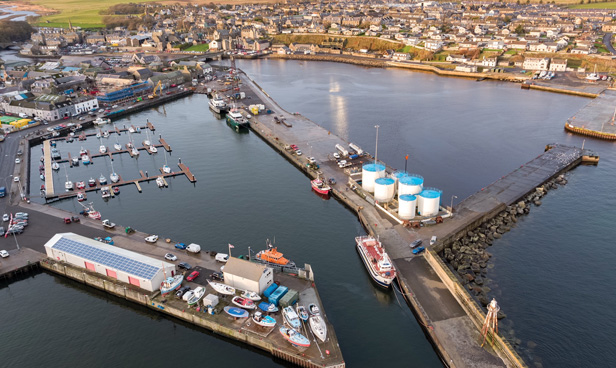
Over £20 million was invested in redeveloping Wick’s harbour front, the long-term operations and maintenance base for Beatrice.
Creating a social legacy
Once one of the busiest herring ports in Europe, Wick on Scotland’s north-east coast was conceived as a self-contained fishing community by renowned civil engineer and architect Thomas Telford. However, as the herring industry went into decline many local buildings fell into disrepair.
In 2014, a decision was taken by SSE Renewables and its project partners to locate the long-term operations and maintenance (O&M) base for Beatrice in Wick. From that moment, plans were developed to construct a new building on the Telford Jetty of Wick Harbour to house the base. However, an opportunity arose in 2016 to purchase two 200-year old derelict buildings at the more sheltered end of the harbour, providing for better vessel access. The project chose to sympathetically redevelop these buildings at the same time as entering in to a long-term lease of harbour facilities to bring a part of the harbour back into operational use, and with minimal impact to other harbour users.
Over £20 million was invested in redeveloping Wick’s harbour front, bringing direct and indirect economic benefit to the local area with over 75 per cent of the workforce involved in the O&M construction from the local community.
To help turn these buildings into the project’s operations and maintenance base, Beatrice looked to their Wick neighbour, local contractor GMR Henderson. For over 30 months, GMR Henderson worked on the site to construct the new base whilst retaining as much of the building’s heritage as possible. During the restoration, a position was made available for an apprentice bricklayer and apprentice joiner due to the workload of the project. They joined four other apprentices who worked on the project along with the main GMR Henderson team.
“It’s so important for local companies to get a chance to play a part in projects of this scale, they bring huge opportunities that can really help the social and economic development of the surrounding areas,” Kyle Henderson, Construction Manager of GMR Henderson, says. “When you choose to employ local people and local businesses you are choosing to work with people who truly care about the end result. When it’s on your doorstep, and for us Beatrice really was, you want the opportunity to showcase your company’s ability and take great pride in what you deliver.”
With the building sensitively restored, the base in Wick Harbour is now the long-term legacy of the Beatrice project. It will host the O&M base for 25 years, supporting up to 90 full time personnel, and further support staff on occasion.
The Wick Harbour Authority is guaranteed 25 years of rental and harbour fees, supporting its further development in the long run. Local businesses continue to benefit from the increased employment and economic activity in the area.
This investment demonstrates how nationally important infrastructure projects can be developed sustainably with significant long-lasting positive impacts for the communities in which they operate.
T: +353 (0)1 6556400
W: www.sserenewables.com

